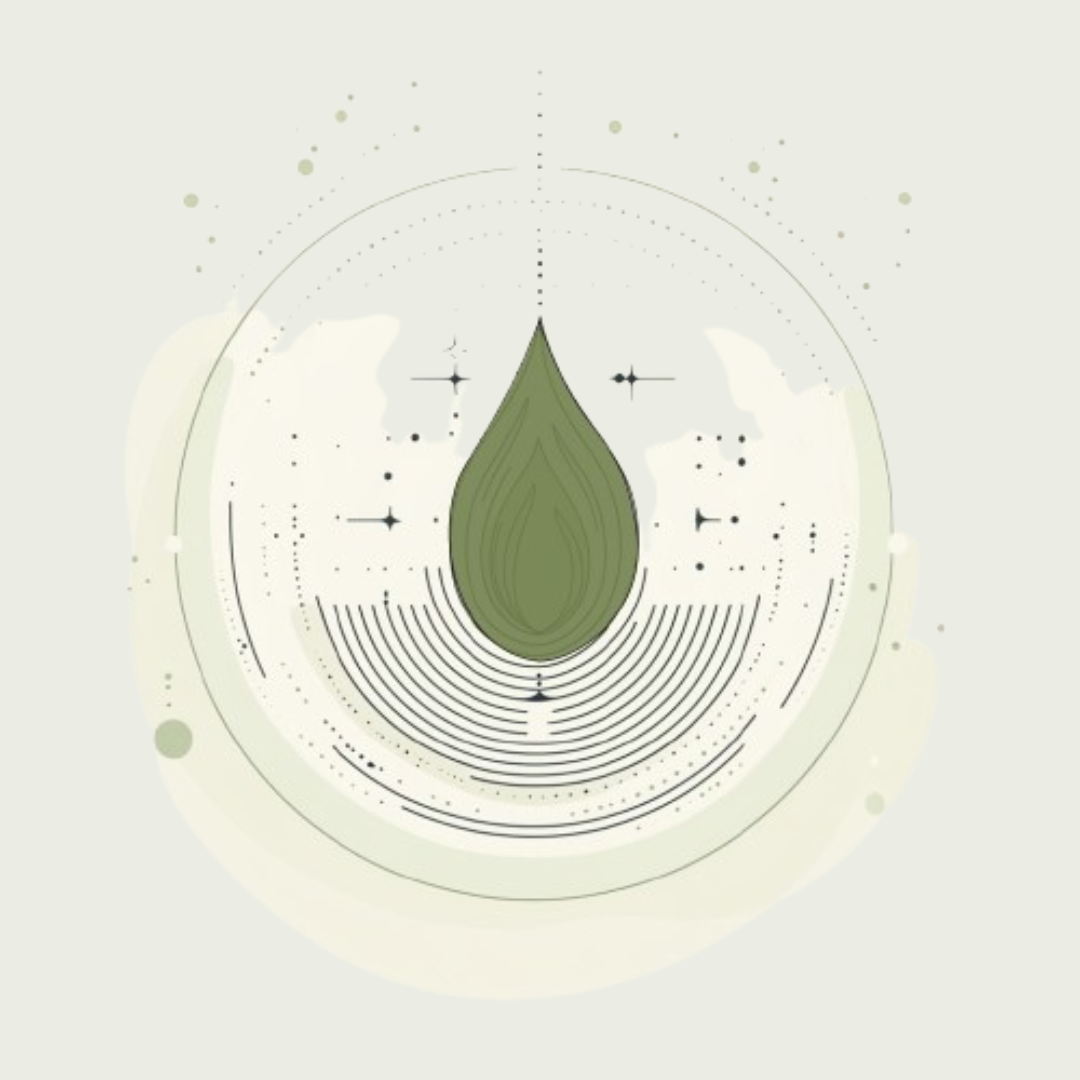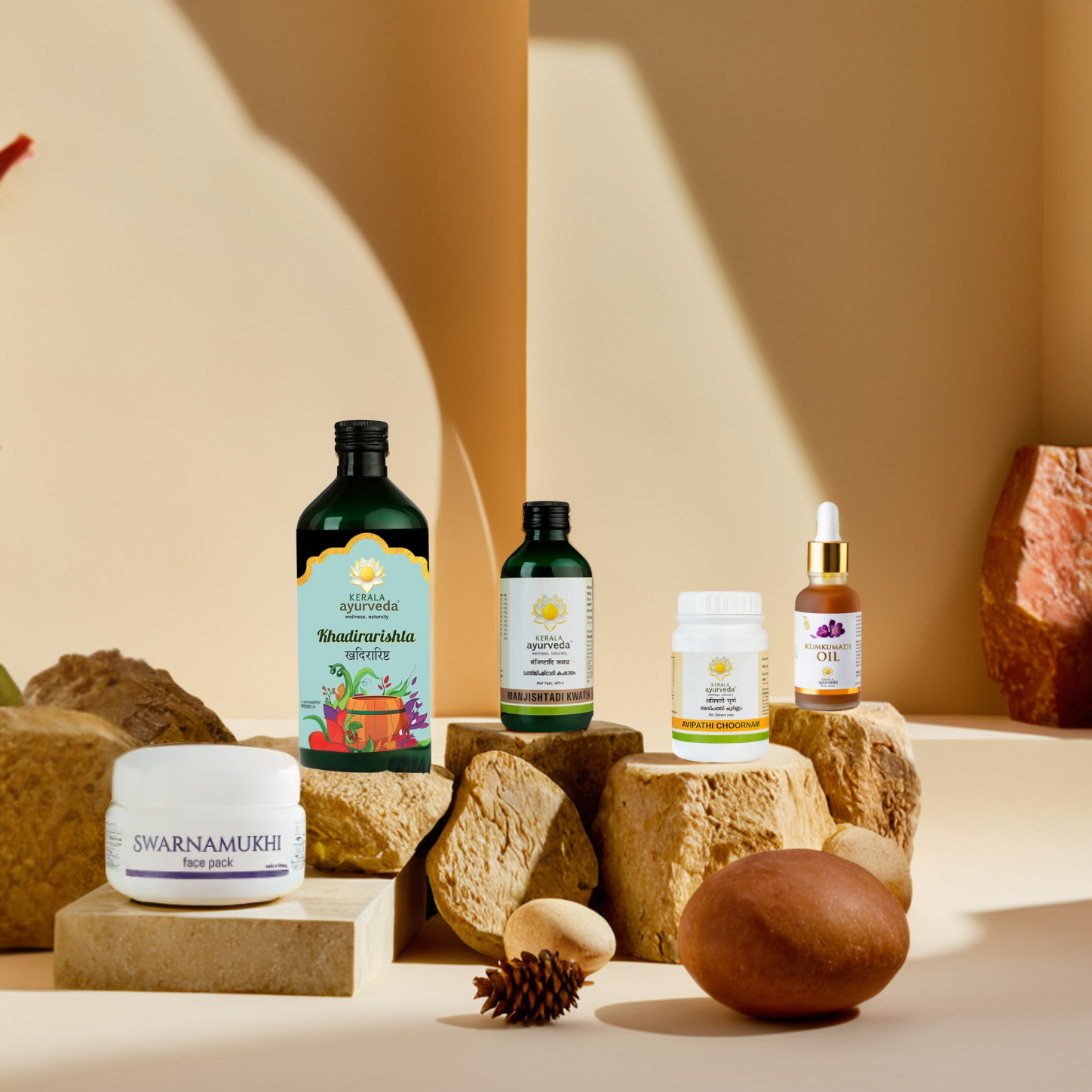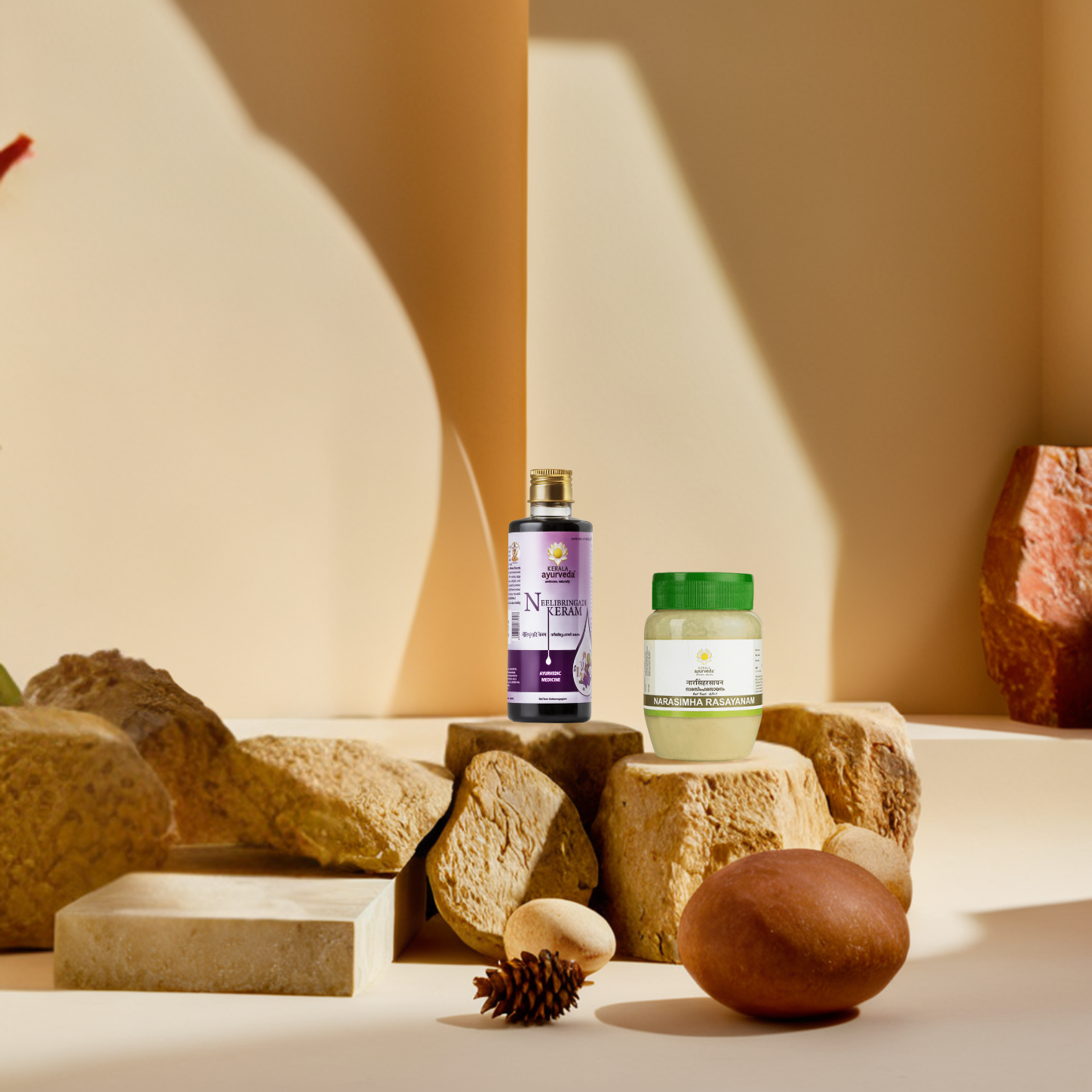Highlights
Ayurvedic Treatment for Relief from Joint Pain
The science of life, Ayurveda, holds all the secrets to various health concerns and cures for the human body.
The ancient knowledge of Ayurveda is based on the foundations of harmony and balance within the human body and between the body and its surrounding environment. According to Ayurveda, our body is a harmonious amalgamation of different parts that co-exist together, enabling us to participate in our day-to-day functioning. Our joints are the connections between two bones that facilitate this movement in our body. However, there are several factors that can cause severe problems and damage to our joints, resulting in the commonly found concern of joint pain, which can have a direct impact on our motion.
What Causes Joint Pain?
Ayurvedic understanding suggests that ailments in the body are caused due to an imbalance in the optimal levels of the three doshas or tridoshas: the Vata dosha, pitta dosha, and Kapha dosha. Any such imbalance can block the flow of prana (the life force) and affect the circulation of nutrients in the body. For example, joint pain can have several causes. Common causes of joint pain include physical injury, general wear and tear of the joints, or an underlying disease. According to Ayurveda, joint pain results from imbalanced Vata Dosha in our bodies. The Vata Dosha handles all the movements within our mind and body. It is also in charge of maintaining blood flow, evacuation of bodily wastes, and breathing. An imbalance in the optimal levels of the Vata Dosha is due to the accumulation of Ama, an undigested metabolic toxin created due to lowered metabolism. The excessive presence of Ama in our joints results in joint pain and stiffness.
Common Symptoms and Signs of Joint Pain
Many of us may experience several kinds of joint pains, which often leads us to question what causes knee pain or what causes frozen shoulders in adults? Shoulder pain, ankle pain, and knee pain are all caused due to pain in the joints that facilitate movement in these body parts. Joint pain is a commonly found complaint in adults. Our hectic schedules and restless lives make us prone to several illnesses and bodily ailments. If you work long hours at a desk job, perform strenuous physical activities, or are simply in the later stages of life, you’re likely to be prone to joint pain. Joint redness, tenderness in the joints, limping, stiffness, weakness, or a visible loss of range of motion of the joint can be some of the common symptoms and signs of joint pain. Along with this, joint swelling or muscle cramps because of an injury or a sprain can also become plausible reasons for joint pain.
Problems Underlying Joint Pain
Underuse of joint muscles because of restricted or limited body movement or overuse such as heavy physical activity, sprains, or strains can cause joint pain. Along with that, viral infections too can make joint movement painful. Chronic joint pain can be a cause of concern as it can be caused due to arthritis. It is one of the most common causes of joint pain. Arthritis is a chronic inflammatory disorder that causes pain in the joints and the tissues surrounding the joints, gradually worsening with age. The two most commonly found types of arthritis among adults are osteoarthritis and rheumatoid arthritis.
Osteoarthritis
Osteoarthritis is the most common type of arthritis. The wearing away of the cartilage over a significant period is what causes osteoarthritis. The cartilage is a coating on the ends of the bones where they form a joint. It is a protective layer between the bones that facilitates smooth movement. Osteoarthritis develops slowly, usually occurring during middle age, and affects millions of people worldwide. It can affect almost any joint in the body, including hands, knees, hips, and spine. People with weak muscles, a family history of arthritis, obesity, or a previous injury are at a greater risk of developing osteoarthritis. Age and gender also act as significant risk factors. Both women and older people are more prone to this concern.
Rheumatoid Arthritis
Rheumatoid is another chronic type of arthritis that causes pain and swelling in the joints. It is an autoimmune disorder wherein the body's immune system starts attacking the lining of the joints, causing swelling and inflammation. According to Ayurveda, Rheumatoid Arthritis is caused due to Amavata. Amavata is the accumulation of ama, a bodily toxin that accumulates within the joints. This gradual piling up of the ama between the body's joints results in joint pain, swelling, and swelling. Additionally, it attacks multiple joints in the hands, wrists, and knees at the same time. Prolonged and severe arthritis can severely damage the arms and wrists and may even lose joint alignment and shape.
Ayurvedic Medicines for Joint Pain and Care
Whether chronic or mild, joint pain is a health concern faced by millions of people across the globe. It may start as a mild pain that gets easily sidelined and is ignored but can quickly turn into a chronic disorder. Therefore, we must take the proper care and measures to ensure our joints' health and smooth functioning. Incorporating natural home remedies and practices in our daily lifestyles is one of the best ways to take care of our joints. Ayurveda offers a plethora of natural remedies and herbal blends for joint pain and care.
1. Turmeric(Curcuma Longa)- Turmeric or Haldi is a bright yellow spice that is often used in Ayurvedic remedies. Curcumin in turmeric has anti-inflammatory, antioxidant, and anti-cancer properties that can significantly reduce joint pain. Turmeric is widely used in cooking in a lot of South Asian countries. Its anti-inflammatory properties are significantly helpful for people with rheumatoid arthritis, in which the body’s immune system starts attacking itself, leading to inflammation and pain in the joints. It also improves joint flexibility and support thus is highly effective for knee pain too. Knee pain is one of the most common joint pains people suffer as it is a weight-bearing joint in our body. Turmeric can either be consumed as a spice in the form of turmeric powder or as a supplement in the form of capsules or joint care ayurvedic tablets.
2. Ginger(Zingiber officinale)- Ginger, another commonly found and used spice, can significantly improve joint pain. A 2001 study by R D Altman and KC Marcussen shows that ginger extract had a statistically significant effect on reducing symptoms of Osteoarthritis of the knee. Like turmeric, ginger also has anti-inflammatory properties that can reduce joint pain and improve joint health simultaneously. Regular consumption of these spices can help reduce the humiliation of ama in the joints, thereby restoring the optimal levels of the Vata Dosha. Ginger is a popular and natural herbal remedy that can be consumed as a spice, natural extract, herbal tea or capsules. It is a widely available spice that tackles the inflammatory response initiated by joint pain and significantly reduces aches.
3. Ayurvedic oils for joints- Ayurvedic oils have been used for centuries for their therapeutic properties. Abhyanga, oil massages on the entire body with warm oil calm the body and the mind while significantly reducing bodily pains.
-
Jambeera Thailam is a holistic blend of natural ingredients and spices such as lemon, ginger, and turmeric prepared in a base oil extracted from sesame seeds and coconut milk. When performed with Jambeera Thailam, Abhyanga can help soothe sore muscles and support joint health by relieving the joints' pain, stiffness, and inflammation. It also improves joint strength and movement in the shoulders. In addition, the unique combination of lemon, turmeric and ginger, which have anti-inflammatory properties, is helpful for people who have rheumatoid arthritis.
-
Karpooradi Thailam is a traditional oil prepared with Kapoor (camphor) in a sesame oil base traditionally used to maintain optimal muscle and joint health. Camphor, often used in religious rituals, has natural healing and cleansing properties acting as a lubricant that relieves joint and muscle pain. When performed with Karpooradi Thailam, Abhyanga may relax muscles, maintain muscle flexibility, and balance muscle strength. This natural ayurvedic oil can do wonders for soothing painful joints and osteoarthritis while providing a calming sensation to the body and mind. Along with joint pain, this traditional oil reduces congestion, improves blood circulation, and naturally relieves migraine pain.
4. Dashmula - Dashmula or ‘ten roots’ is a herbal mixture of ten tree and shrub roots such as Patala, Gambhaari, Brihati, Shalparni, Shyonaak, Gokharu, Kantkaari, Agnimanth, Bilva, and Prishniparni. This herbal remedy can combat symptoms of arthritis such as swelling and pain. It has an analgesic, antioxidant, and painkiller effect on arthritis symptoms such as swelling and joint pain. Its anti-inflammatory properties can combat inflammation in joints, which is a common ill-effect of rheumatoid arthritis. It also acts as an antioxidant, analgesic, and sedative to help improve digestion, nerve related health concerns and reduce muscle spasms. Dashamula can be used in the form of ayurvedic massage oil or can be consumed as a powder.
Common Preventions for Joint Care
There is a reason why the phrase ‘Prevention is better than cure’ is vital in healthcare. The all-encompassing knowledge of Ayurveda has been incorporating this vision since ancient times. Nidana Parivarjana (avoidance of causative factors) is an ayurvedic term viewed as the initial footmark for any disease. Therefore, incorporating preventive measures into our daily routine or dinacharya is a foolproof method of ensuring holistic health and wellbeing.
Ayurveda offers a wide range of solutions and lifestyle practices on how to prevent joint pain. Adopting healthy habits such as regular exercise, avoiding tobacco products, intaking a balanced diet, and maintaining a healthy body weight can help avoid joint pain and related concerns. Along with this, one should be careful while performing strenuous physical activities such as working out and lifting heavy objects. They add further pressure on weight-bearing joints, which can result in injuries or straining. Other than these everyday activities, one should also incorporate ayurvedic herbal remedies and ingredients in their diets or separately for daily consumption in the form of tablets, capsules, herbal teas, or powders. Finally, one should regularly perform abhyanga massages with ayurvedic oils to ensure joint flexibility, stability, and smooth movement of joints.
Ayurveda for Healthy Life
Our hectic, on-the-go lifestyles have somehow left our health and wellbeing in the backdrop. Thus, with each passing day, it becomes more important that we focus on our health and take some time out to rejuvenate our body, mind, and soul. This is precisely where Ayurveda steps in. This ancient science of life holds the key to our holistic development in these modern times.
FAQs
1. What causes knee pain?
Knee pain can be a result of an injury, straining of the knee joint, or conditions such as arthritis, gout, or infections. In Ayurveda, any form of joint pain is caused due to an imbalance in the optimal level of the Vata Dosha, which is responsible for all bodily movements.
2. How to avoid joint pain?
One must take daily precautions such as regular exercise, avoiding tobacco products, intaking a balanced diet, and maintaining a healthy body weight. Taking ayurvedic remedies and using ayurvedic oils can also help.
3. Is turmeric good for joints?
Turmeric is a natural ayurvedic ingredient with anti-inflammatory, antioxidant, and anti-cancer properties. Regular consumption of turmeric can reduce joint pain.
4. What causes osteoarthritis?
Osteoarthritis is caused by the gradual wearing away of the cartilage over a significant period. It is one of the most common types of arthritis.




